
4th place in Venice Cup!

📌 Real-time updates: this article will be updated throughout the competition, so make sure you check it from time to time!
My first World Championships in the Women’s category
Three days off in Copenhagen before getting started
Our first deal of the Championships
Which overcall to maximise pre-empting?
A lucky decision at a high level
A deal against the Turks in the quarter-final
Defeat to the Dutch in the semi-final
Lead problem: listen carefully to the opponents’ bids
Defeat to Poland, a very strong team
My first World Championships in the Women’s category
I always compete with the same team: Anne-Laure Tartarin, Marion Canonne, Carole Puillet, Donatella Halfon and my partner Anaïs Leleu.
We were runners-up in the European Championships last year, just behind Norway. Our initial goal is to qualify and then do our best in the knockout stages!
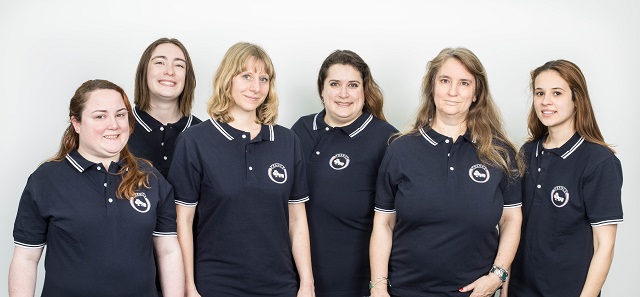
Three days off in Copenhagen before getting started
Those who follow us know that Anaïs and I mainly travel by train! As it meant a 12-hour train journey to Denmark, we took the opportunity to spend a 3-day weekend in Copenhagen, where we had never been before 🙂

Between sightseeing, revising the system and resting, we also visited… Copenhagen Zoo! I had never been to a zoo before, so it was amazing to see the giraffes, pandas, tiger, hippos… Absolutely everything!
We also did another mental coaching session. Last year, we had several sessions with a professional to prepare for the European Championships.
We revisited some of what we had done with her: stating our individual goals, our goals as a pair, and our goals as a team, talking about our strengths as a partner and a pair, etc. It helped us get on the same wavelength as a pair!

The statue of the Little Mermaid in the harbour, inspired by Andersen’s tale

Revision in the park before taking the train (with a stop in Veijle for the night)
Arrival in Herning ♥
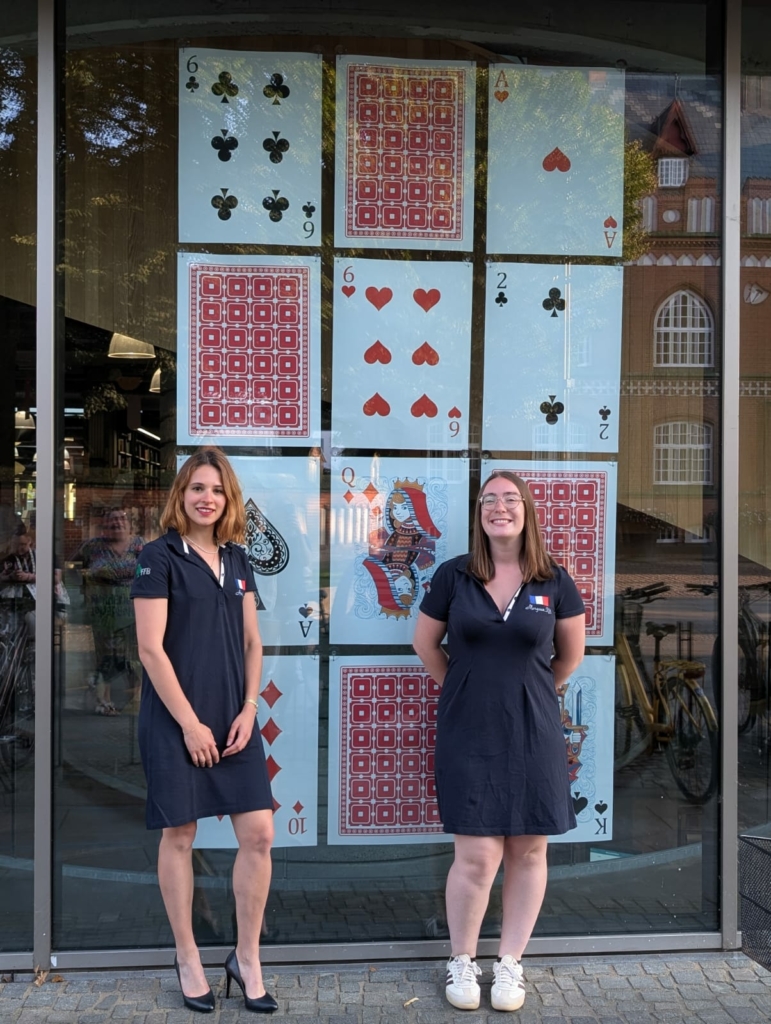

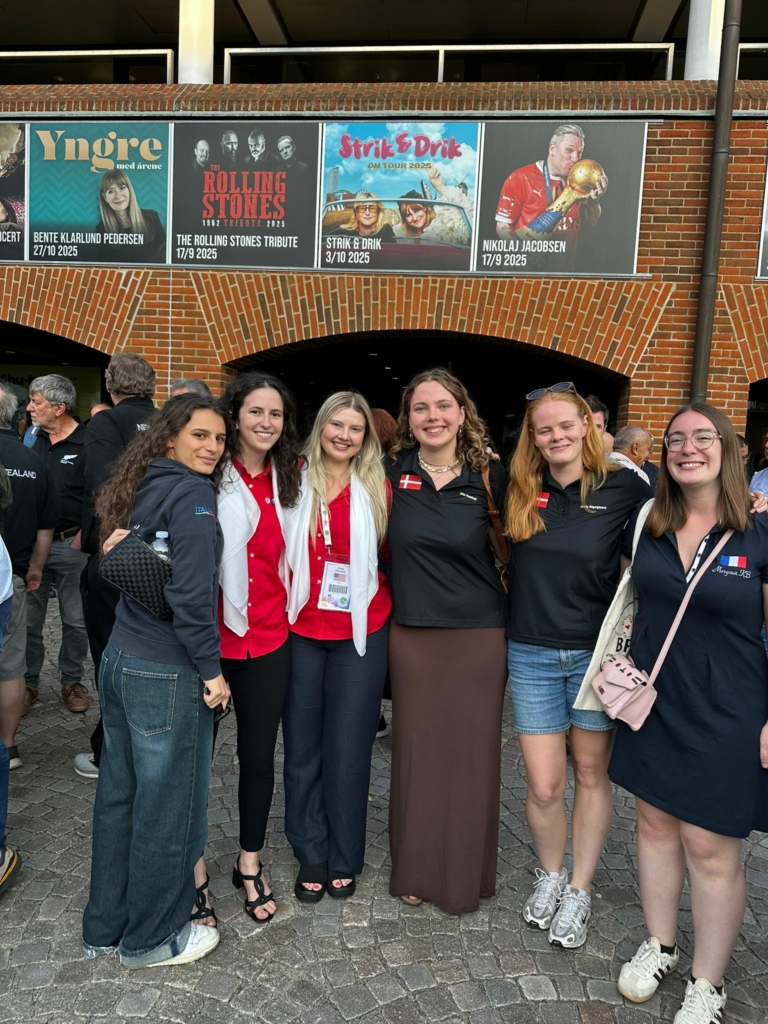
7th place in the qualifiers
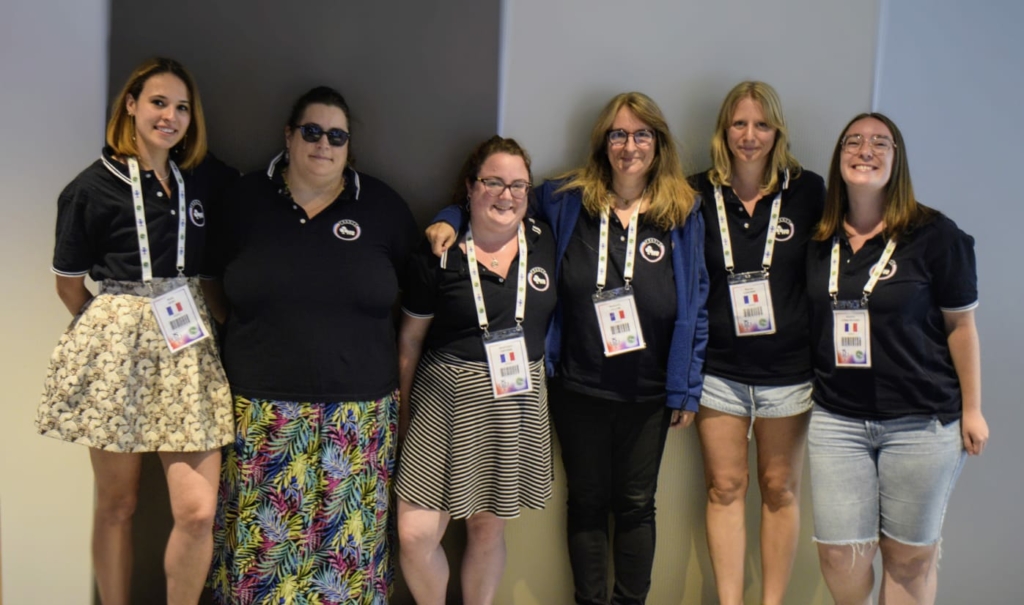
We finished 7th after 6 days of qualifying, so we qualified for the quarter-finals!
We got some funny and some very interesting deals! Here are two of them:
Our first deal of the Championships
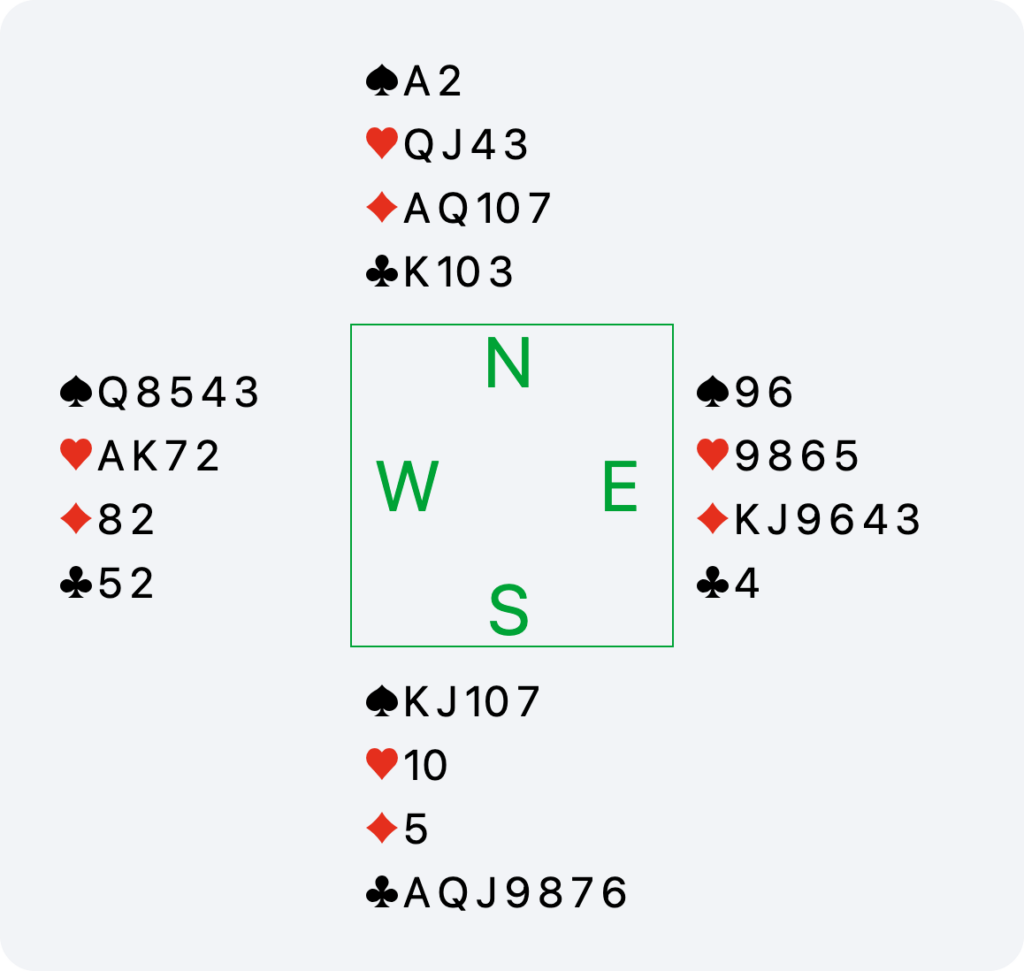
We were happy to start the Championships with 6♣ = (our opponents played in 3NT). The bidding went:
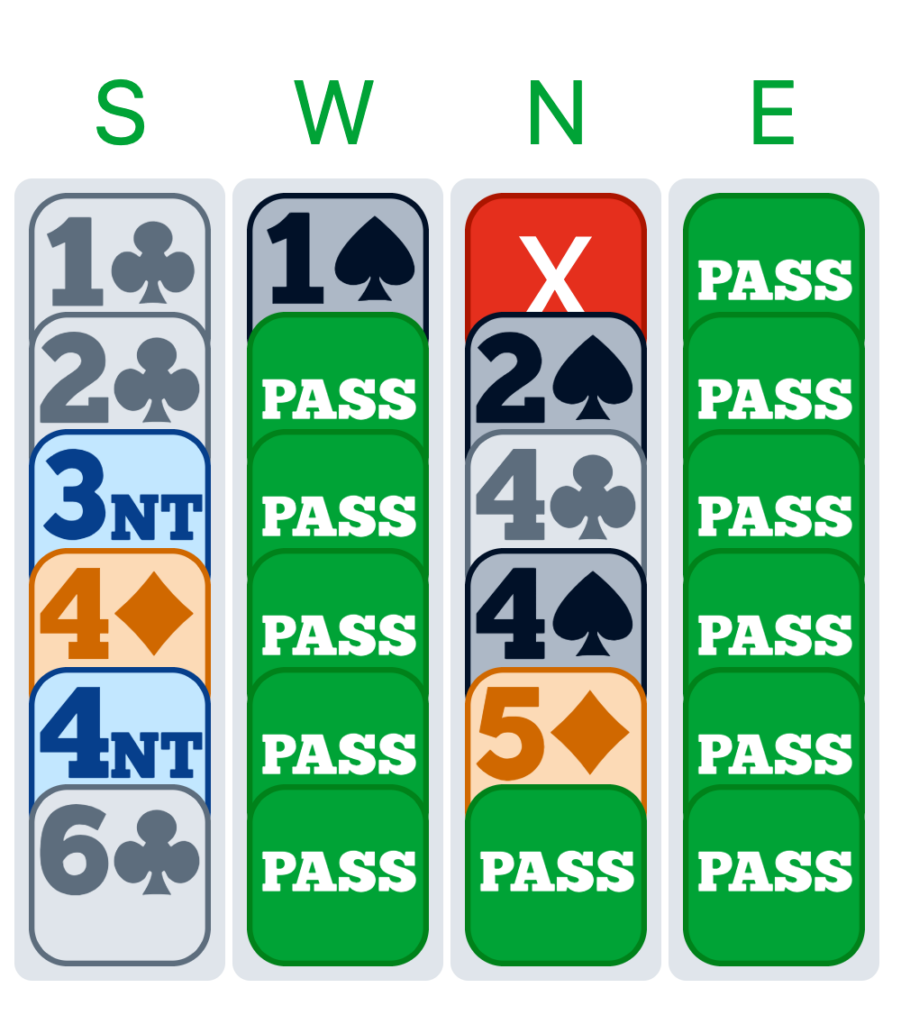
2♠ is not game-forcing, so I can’t really make my clubs longer since 3♣ would be non-forcing…
I have too much for 2NT, which would also be non-forcing, so I went for 3NT despite the 7-4 break!
What a relief when Anaïs raised to 4♣, inviting to slam! Then it was pretty easy to play in 6♣. Anaïs assessed her hand well, knowing that I was maximum for my 2♣ bid.
Which overcall to maximise pre-empting?
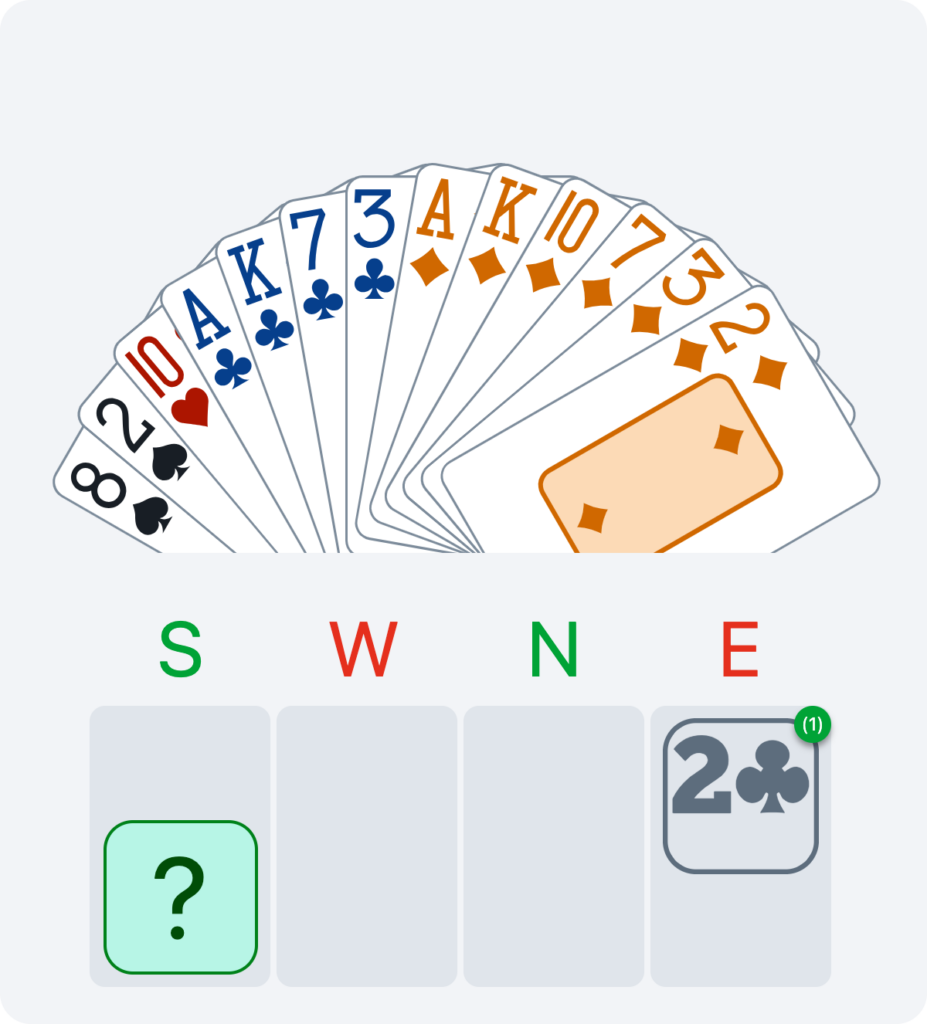
This time, we overcalled against a game-forcing 2♣ bid.
With our 14 points and 3 cards in the majors, we suspected that the 2♣ bid came from a hand with a long major.
Rather than 2♦, I decided to jump to 4♦. It is supposed to show a weak hand, but the key is to make things awkward, and I don’t really imagine making a game.
A good decision, as the opponents went down at the 6-level, thinking they were attacking, and were of course doubled!
The four hands:
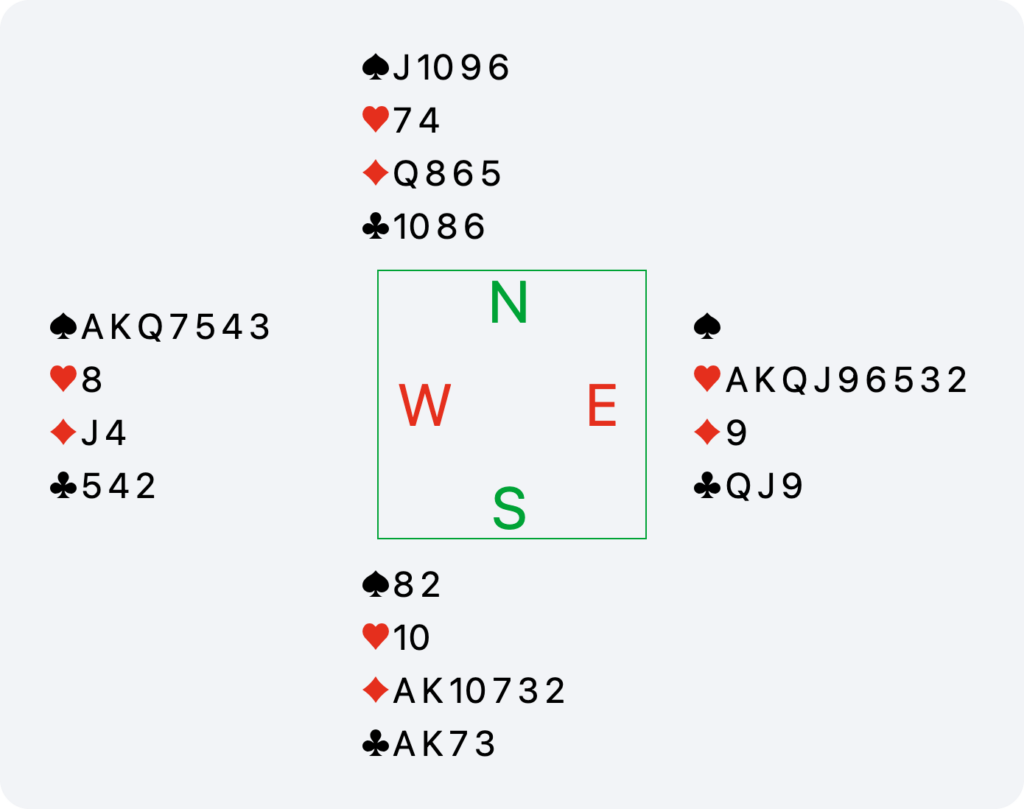
A lucky decision at a high level
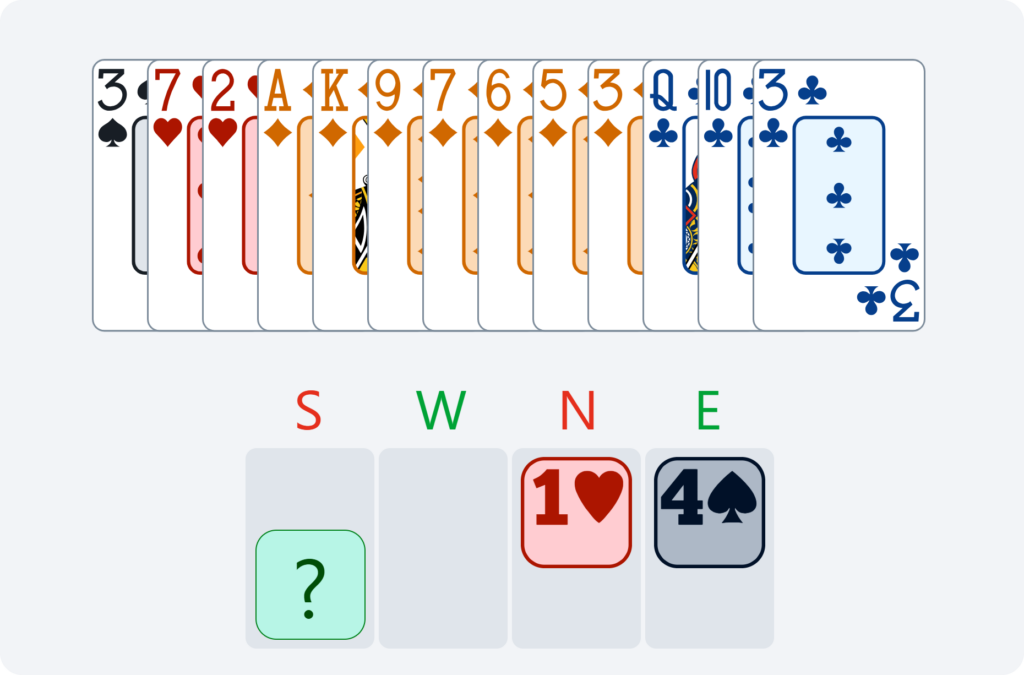
Three options: 5♦, Double and Pass. I really don’t know what was the best thing to do. 5♦ requires three cover cards opposite, provided that no diamonds are lost. I thought that was a lot to ask and I decided to double to write points in my scorecard (I didn’t consider passing too much at the table).
It was a very good move since we didn’t make 5♦ and our opponents went down by three tricks in 4♠ doubled! +12 IMPs for us 🙂
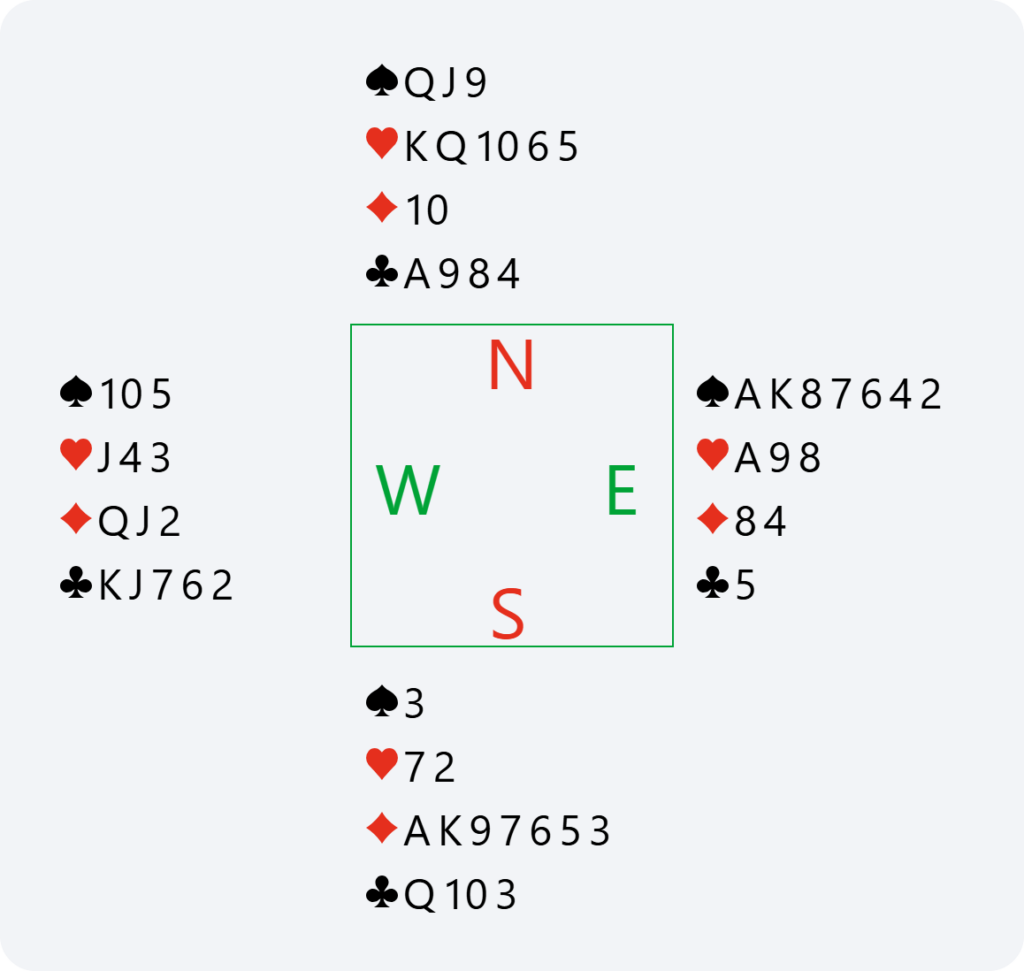
As I wasn’t sure what to do, I looked at what they did in the Bermuda Bowl (Open). At the tables where East bid 4♠, South usually passed or went 5♦. A difficult decision!
The two teams qualified for the quarter-finals: the Women (who will play Turkey) and the Seniors (who will play Sweden).
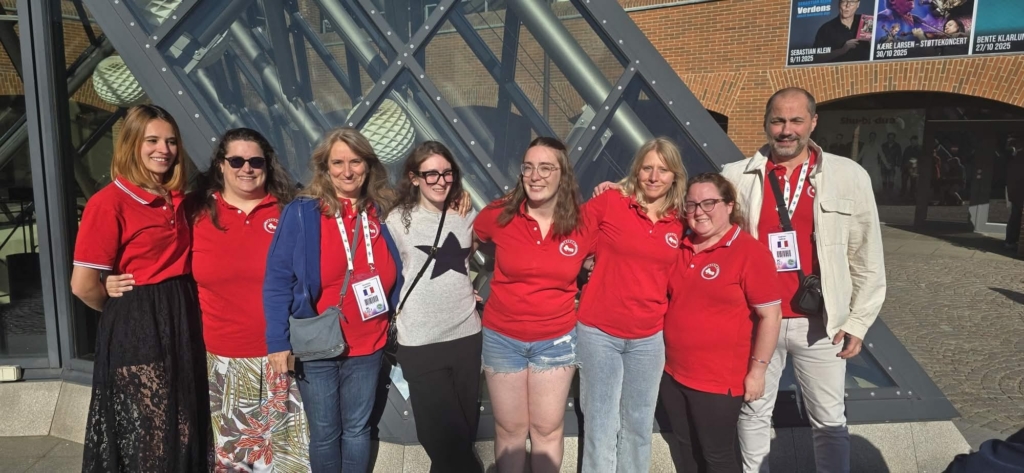
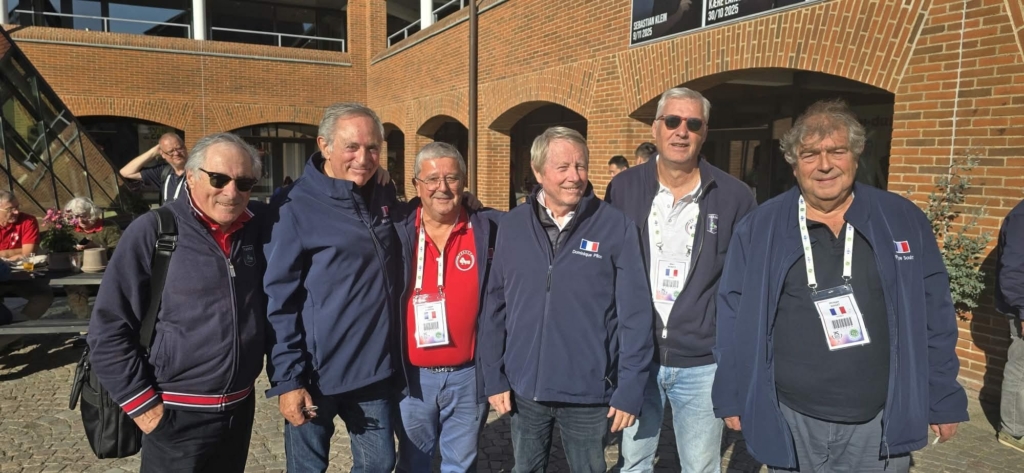
A deal against the Turks in the quarter-final
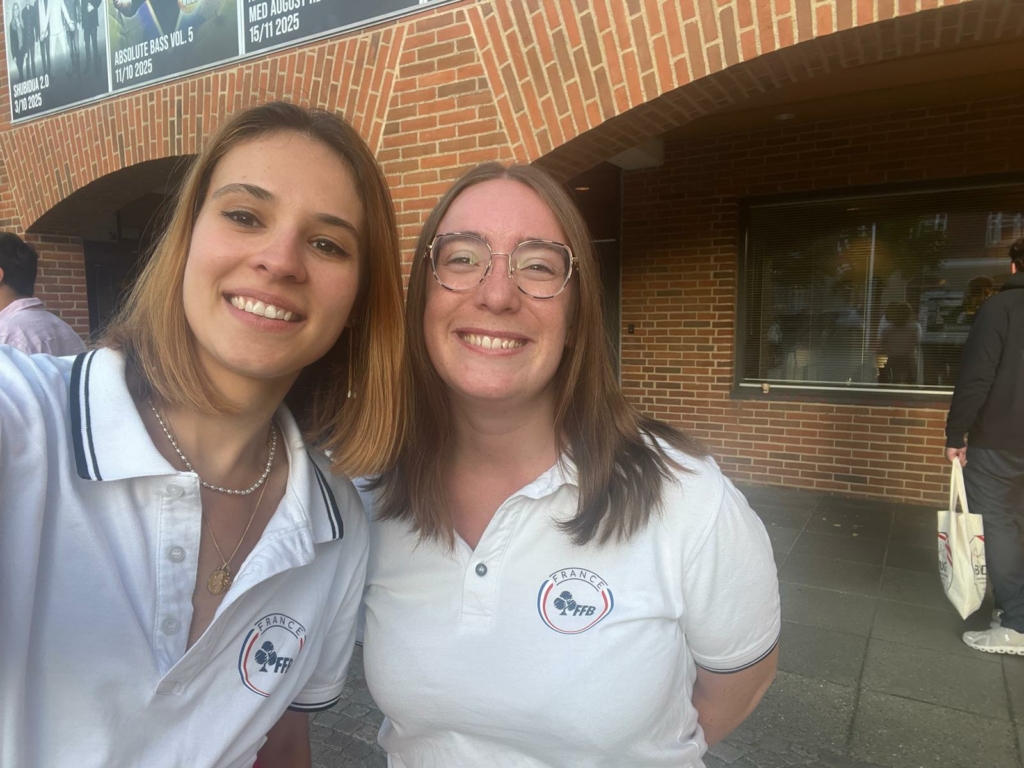
We won this match by 75 IMPs, which means we qualify for the semi-final against the Netherlands!
It wasn’t me who had this hand, but my team-mate Carole.
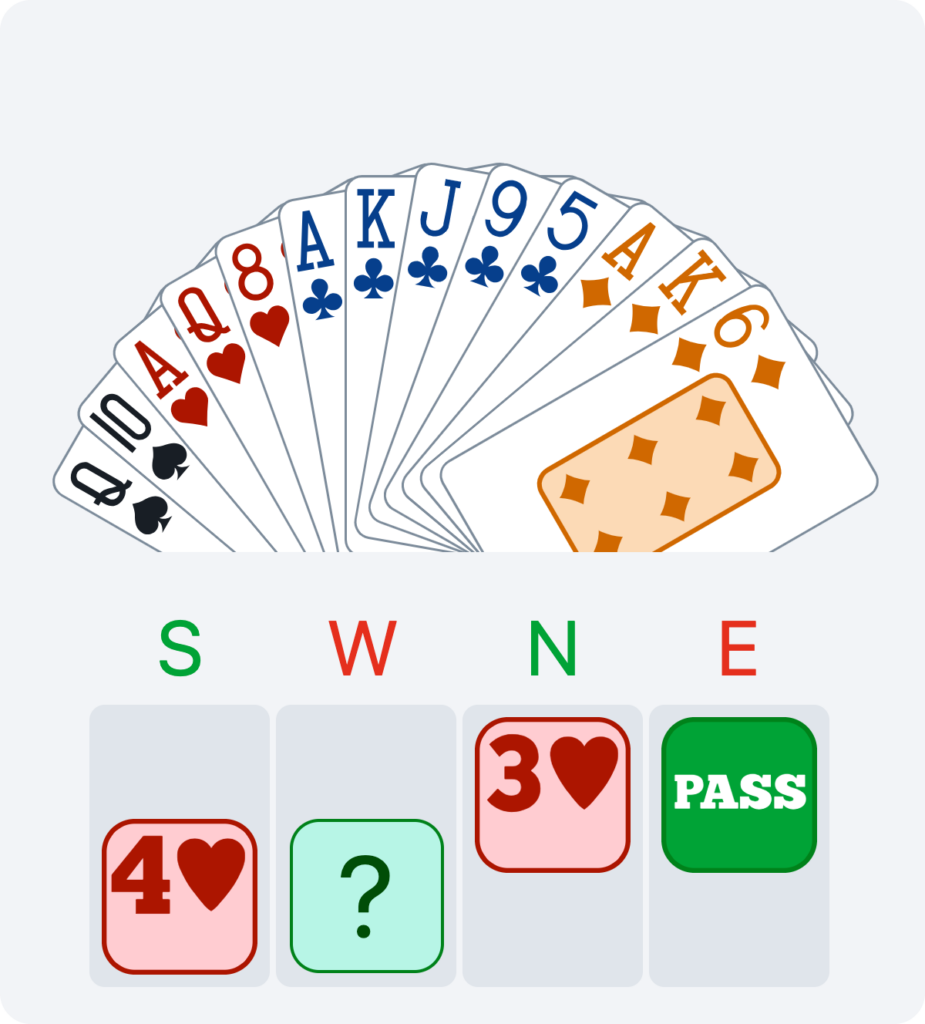
Over 4♥, she first chose to double because if partner passes, she will hit the jackpot. And then if she bids on, she will show a very strong hand.
Over the 4♠ bid made by Anne-Laure opposite, we still have to decide: say 5♣ or pass, hoping for the length opposite?
She signed off in 5♣, which seems well played to me. Partner can only have four spades and in addition, we will protect the ace-queen tenace in hearts.
Here are the four hands.
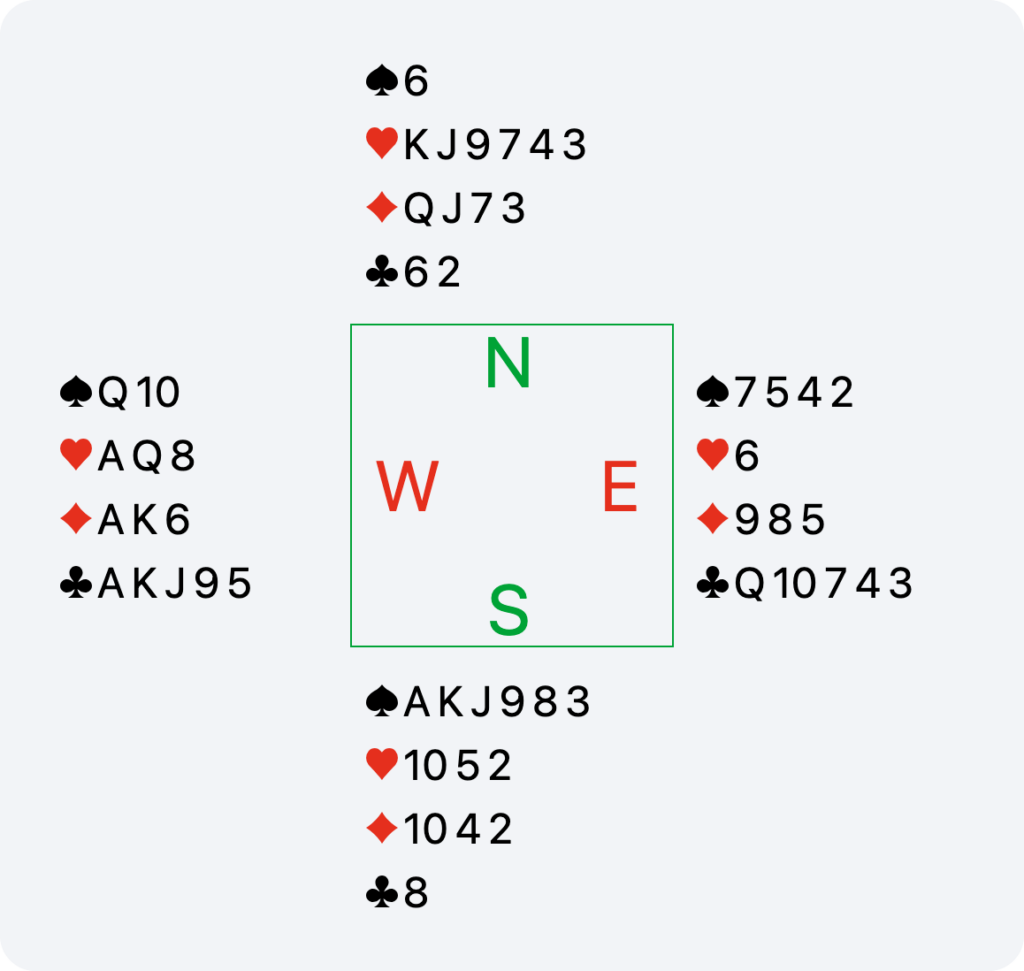
One important thing is the Pass in South from my hand over 4♠ (we had the same sequence at our table), very important for encouraging opponents to play this contract (it will be much harder to move to 5 in a minor if West has three spades!). I knew that 4♠ would go down, but not 5 in a minor, so we must not take any risks and especially not help them find a winning contract!

Defeat to the Dutch in the semi-final
Despite a good start against this team, which won the group phase, we lost a set by 50 points, which we were unable to make up for afterwards. In the other semi-final, the Chinese advanced to the final and we met the Poles for the bronze medal match.

A nice 3NT by Anne-Laure
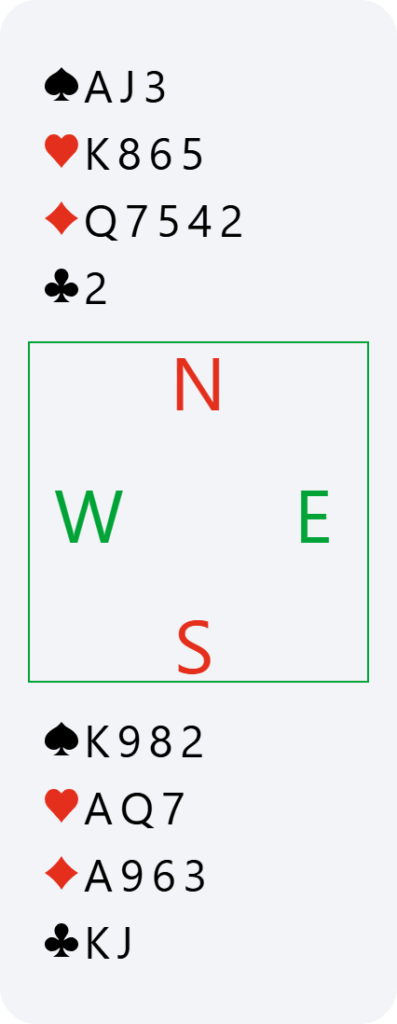
Anne-Laure plays in 3NT in South after East’s club overcall, which led to the club lead. Ace of clubs and club return. Here, to make nine tricks, it is necessary to not give up the lead because all the clubs are established and the opponents can communicate in the suit.
First, if the hearts are breaking well, we have four tricks in the suit, added to the king of clubs and the ace of diamonds. A good option for getting the missing trick is the spade finesse. This doesn’t necessarily have to be against the queen. With East’s overcall, you can choose to start off with the jack of spades and then finesse against the 10 in West!
One last idea? Anne-Laure thought it best to cash the ace of diamonds to try for the bare king before choosing her spade play! Since nothing worked in spades, she was well rewarded for this accumulation of chances.

Lead problem: listen carefully to the opponents’ bids


You know from the bidding that the dummy has a good hand. Bidding 3♠ rather than doubling shows a more distributional hand, probably with a solid long suit. I was a little afraid of leading fourth best and giving away the ninth trick, so I started with the ace of spades to see the dummy.
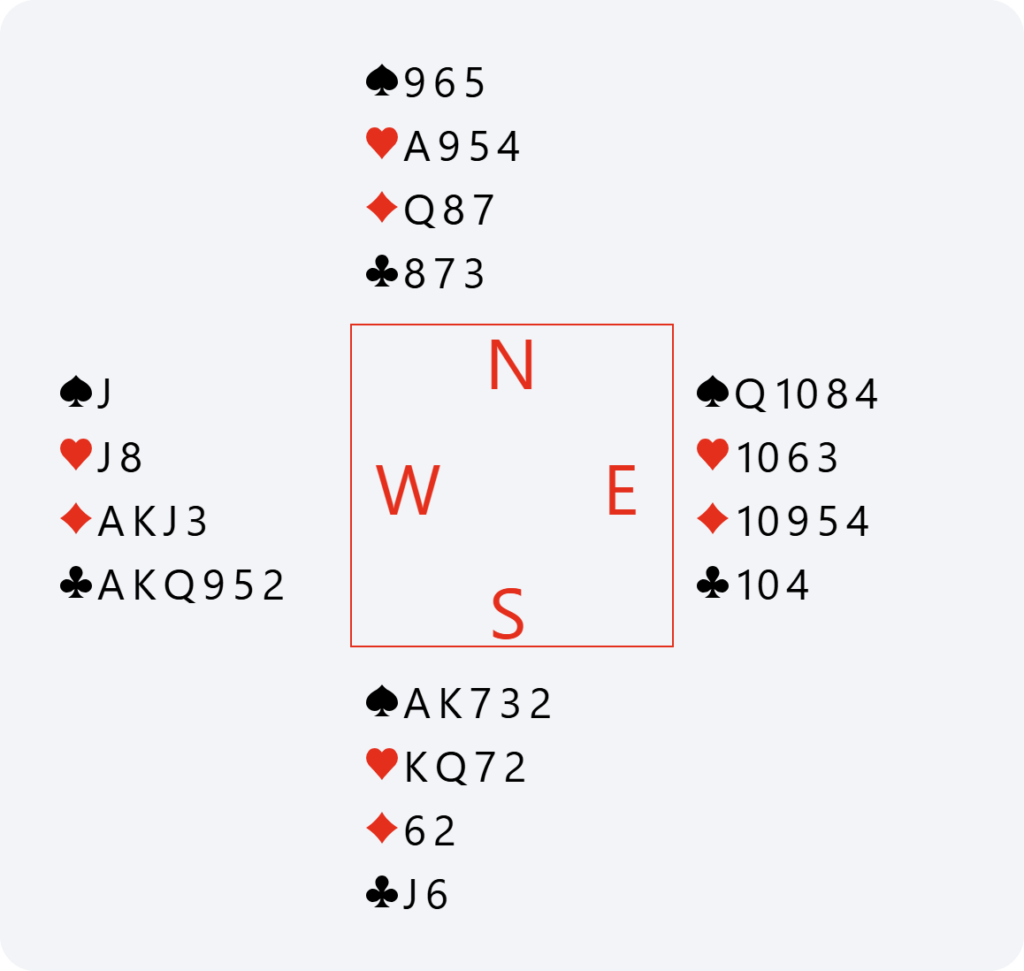
Seeing the eight tricks in the dummy, I switched to hearts, which allowed us to take the contract down.
It is a good tactic to lead your aces when you know that the dummy has an established suit and then decide later.
Against gambling 3NT, for example, even if you have five cards in a suit and a short ace somewhere, sometimes it is better to see the dummy and try to take five tricks quickly.
Defeat to Poland, a very strong team

The Polish team was very strong (and very nice!) and we weren’t in great shape. We played well in the first two sets with Anaïs, then lost a lot of points in the last one, largely because we knew that we couldn’t win anymore.
The Polish team was very strong (and very nice!) and we weren’t in great shape. We played well in the first two sets with Anaïs, then lost a lot of points in the last one, largely because we knew that we couldn’t win anymore.
Unfortunately, we will get a medal in the Venice Cup next time! But finishing fourth in our first Women’s World Championships with Anaïs is still great, and especially the fact that we made it to the end. 🙂
Attack or defence?

Two options: 2♦ to try to play in 3NT or 4♥, or 5♦ to pre-empt and get the opponents with their back to the wall.
I am sharing this deal because before, I probably would have said 2♦ like Anaïs to try and describe my hand as much as possible. On the other side, the Pole jumped to 5♦ and Marion doubled for +2, which really isn’t reproachable.
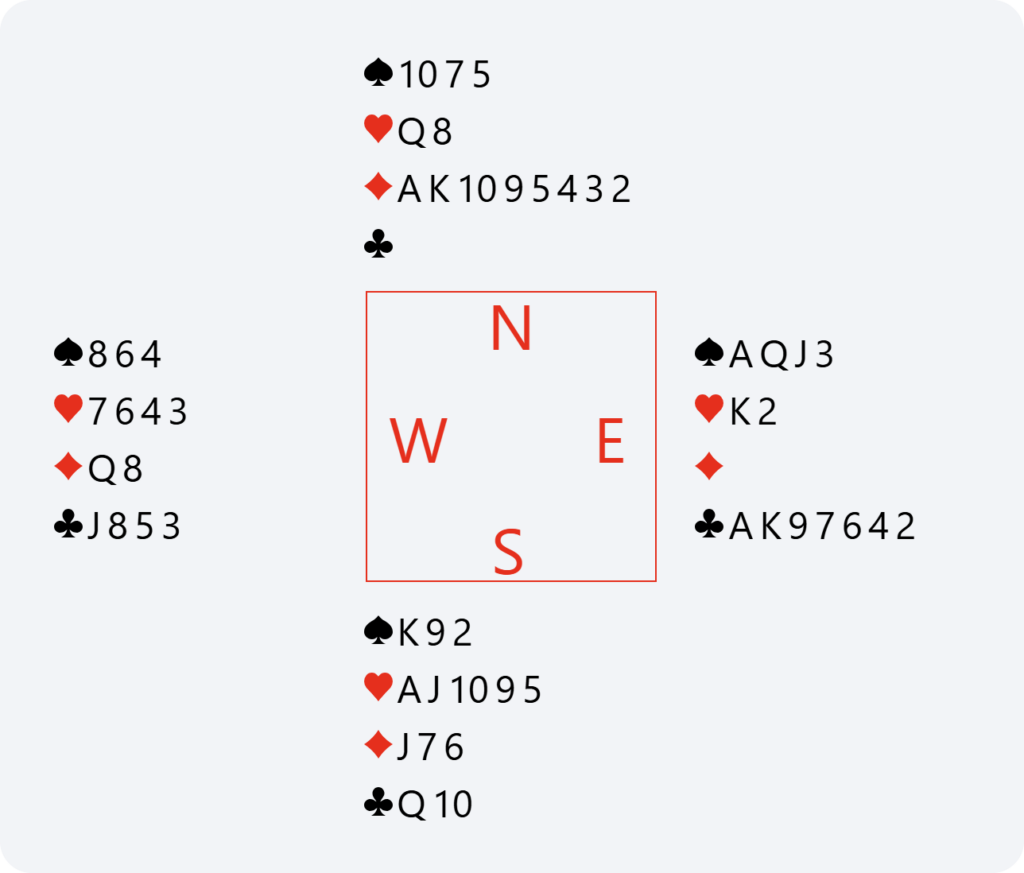
A good argument for bidding 5♦ next time with this type of hand, even though there are bad cases to both options… For example, if I had had thirteen points and six or seven hearts, her decision would have earned us points.
End of this championship, which will remain an unforgettable experience! ♥
Did you enjoy my article?
Share your support in the Comments section of this article! ♥



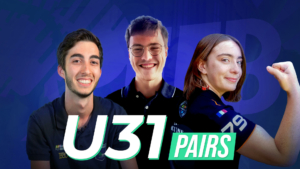
Wow
Mm I think before you posted this wow. That you really enjoy playing this game
Your call of 6 C showed great understanding between the two of you.
But with 6D in hand, partner could take it to 5D after an initial call of 3D. If the Oppents went to 5H, you could have escalated it to 6D and with the understanding, 6HX was a good call again.
Yes ty 🙂 I agree
Parabéns meninas. Boas decisões
Always good to learn from such a brave decision on the 4 Spade double contract. Bravo !
PODOBAJA MI SIĘ
Thanks!!
Great!!